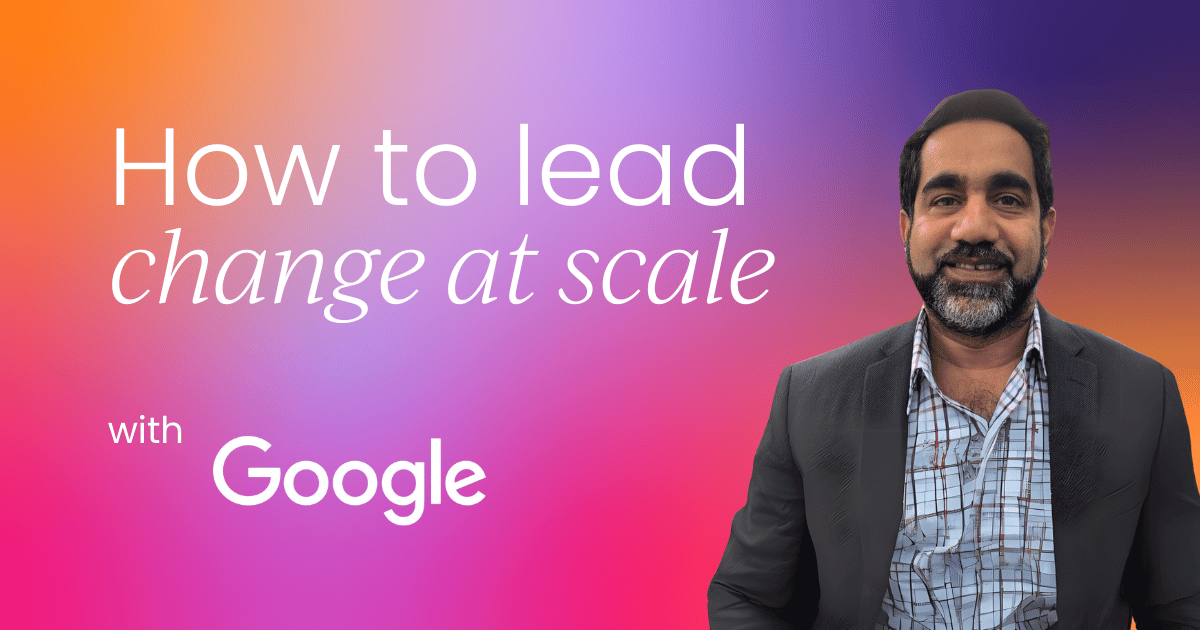This article comes from Rohit Angle’s insightful talk at our San Francisco 2024 Revenue Operations Summit. Check out his full presentation and our wealth of OnDemand resources.
Who wants change? Probably everyone reading this. But who actually wants to change? That’s a different story. And leading change? That takes guts.
If you work in revenue operations, chances are you’re not just experiencing change – you’re the one rolling it out. That means you’ve also felt the resistance that comes with it. Across two decades of driving change, from my days at Bain to my current role at Google, there’s one truth that sticks: change is hard.
And it fails. A lot.
Research shows that 70% of corporate change programs don’t deliver their intended outcomes. Why do they fail? Because people resist. Not out of stubbornness, but because of two things: mistrust and lack of awareness.
In this article, I’ll walk you through how I approach managing change at scale, using a simple framework I’ve honed over time: Who, Why, What, How. It’s not flashy, but it’s effective. I’ll also share stories from the field – some wins, some lessons learned the hard way – all with the goal of making your next big change a little smoother.
Let’s get started.
Understanding the types of change you're driving
The first step in managing change is knowing what kind of change you're dealing with. Not all change is created equal.
I like to think about change using two dimensions:
- Depth: How different is this from the status quo?
- Breadth: How many people are impacted?
This gives you four buckets:
- Adaptive (shallow + small): Pipeline stage tweaks or CRM form updates
- Broad + shallow: Minor reporting changes rolled out org-wide
- Deep + focused: Redefining one role significantly (like up-leveling account managers and outsourcing 20% of their tasks)
- Transformative (deep + broad): Major overhauls like implementing a new CRM or shifting to customer-centric selling
All of these require change management. But the level of planning, buy-in, and energy you invest will depend on where your initiative lands on that grid.
If you’re leading a transformative change, you’ll likely need executive sponsorship, a full change management office, and months (or years) of coordination. For something adaptive, you still need communication and alignment, but the scope is more contained.



 7 min read
7 min read
 Follow us on LinkedIn
Follow us on LinkedIn




